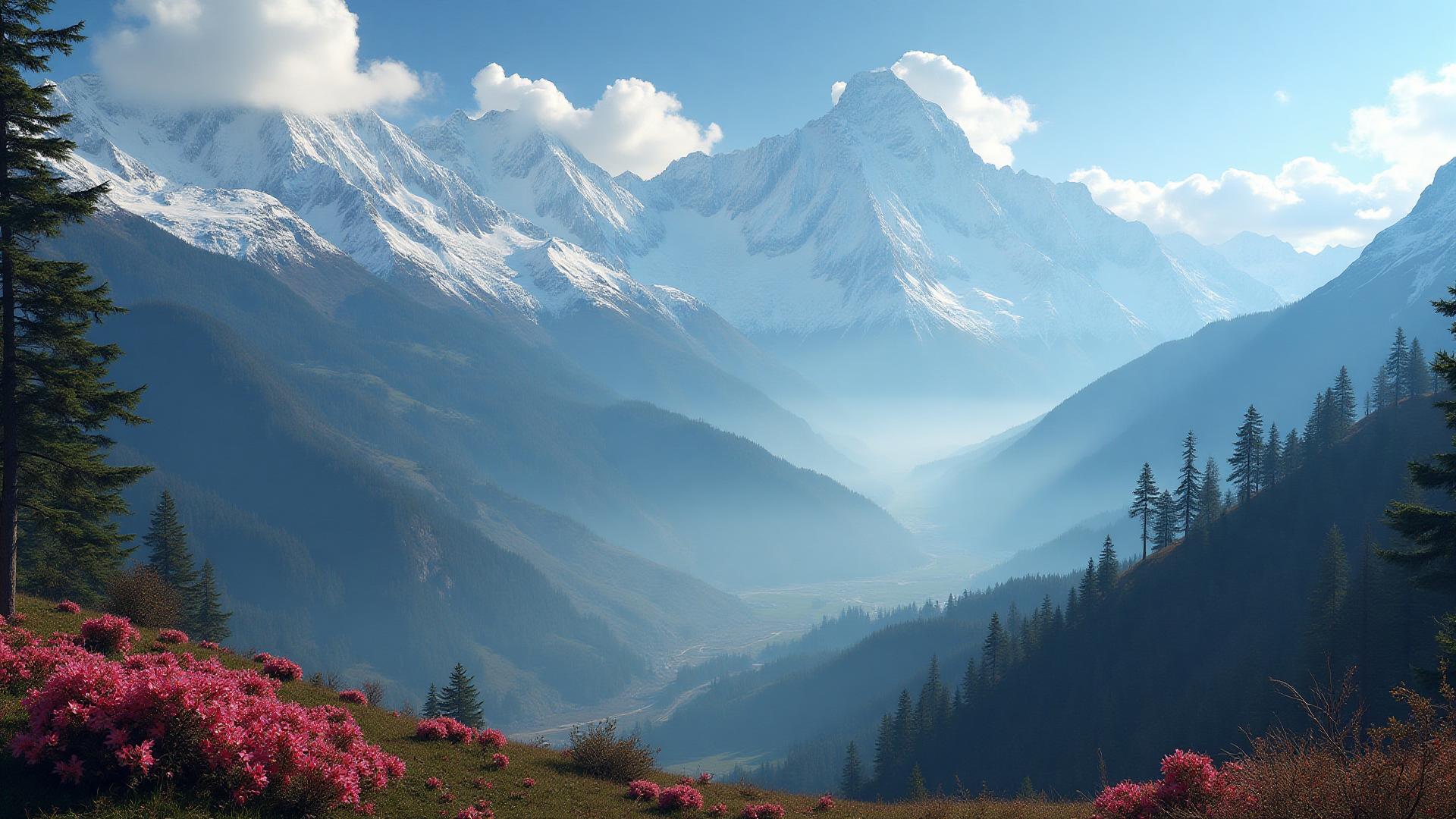About
Khotang District & Diktel Rupakot Majhuwagadhi Municipality
Physiogeography: Land of Ridges, Rivers & Sacred Heights
Hidden in the green folds of Nepal’s mid-hills, Khotang District is a land where sacred caves, ancient forts, and mountain ridges merge with vibrant indigenous cultures. At its center lies Diktel Rupakot Majhuwagadhi Municipality, a place where history, spirituality, and breathtaking landscapes converge — a living museum of nature and heritage. Diktel Rupakot Majhuwagadhi Municipality is situated in the district headquarters of Khotang, about 250 km from Kathmandu. It takes approximately 8-9 hours to reach Diktel from Kathmandu by bus.
Elevation Range: : From 269 m to alpine ridges above 2,983 m above mean sea level.
Mountain Panorama: : On clear mornings, the snow giants of the Everest–Makalu range appear on the horizon.
Rivers & Valleys: : The Dudh Koshi and Sunkoshi river systems carve fertile valleys and deep gorges.
Biodiversity: : Rhododendron forests, chir pine slopes, and alpine meadows teem with orchids, pheasants, and Himalayan flora. Endangered species such as Red Panda and Chinese Pangolin are also found here.
Climate: : Pleasant temperate air in Diktel (1,600 m), with crisp winters and lush monsoon greenery.

Iconic Places of Interest
🔱 Halesi-Maratika Cave (Halesi Mahadev)
- Revered as the “Pashupatinath of the East.”
- A pilgrimage site shared by Hindus, Buddhists, and Kirati alike.
- Mythic cave where Lord Shiva is believed to have hidden from Bhasmasur; Buddhists know it as the site of Padmasambhava’s immortality practice.
🏞️ Diktel Bazaar & Majestic Viewpoint
- A lively hill-town market blending Rai, Newar, Tamang, and Sherpa traditions.
- Offers panoramic sunrise and sunset views over rolling green ridges to Himalayan silver peaks.
- Known for traditional handicrafts, organic local produce, and cultural performances.
🏰 Rupakot & Majhuwagadhi Forts
- Remnants of the unification era of Nepal, where warriors defended hilltop ridges.
- Silent stone walls whisper history against backdrops of clouds and pine forests.
- Trekking around the forts unveils legends of resistance and local pride.
🌊 Baraha Pokhari (Sacred Lake)
- A pristine highland pond steeped in myth, believed to be blessed by Lord Vishnu.
- Surrounded by serene forest — ideal for meditation, birdwatching, and eco-tourism.
🏡 Heritage Villages: Patheka & Buipa
- Custodians of Rai heritage, stone-paved courtyards, and millet granaries.
- Rich traditions of Sakela dances, bamboo crafts, and tongba (millet beer) hospitality.
- Authentic homestay experiences connect travelers to community life.
🌅 Tyamke Hill Ridge
- Known for its golden sunrises and fiery sunsets.
- A new trekking hub combining biodiversity, adventure, and rural hospitality.
- Often called the “Balcony of Khotang.”
🗻 Mundum Trail – The Sacred Trail of the Kirati People
- Named after the Mundum scripture, the oral tradition of the Kirati people.
- Connects Diktel → Maiyung Hill → Salpa Pokhari → Jaljale Ridge → Silichung Peak.
- Trekkers experience cultural immersion, sacred rituals, and breathtaking Himalayan vistas, including Everest glimpses.
🕉️ Maiyung Hill (Sacred Kirati Ritual Site)
- A spiritual energy point, central to Kirati shamanism.
- Local shamans gather here for seasonal rituals, healing ceremonies, and ancestral worship.
- Also a Himalayan viewpoint with sunrise glimpses of Everest.
🌊 Salpa Pokhari (3,350 m)
- Sacred high-altitude lake, revered by Hindus, Buddhists, and Kiratis.
- Believed to be a gateway between human and spirit realms, important in shamanic cosmology.
- Pilgrims visit during Janai Purnima and other sacred dates.
Why Visit Khotang & Diktel?
Spiritual Heartland Where caves, ponds, and temples echo with myths of gods and saints.
Cultural Crossroads Rai heritage intertwined with Hindu and Buddhist traditions.
Scenic Escapes A hidden jewel offering Himalayan horizons without the crowds.
Everest Horizons Rare glimpses of Everest and Himalayan ranges without trekking to crowded routes.
Authenticity Community-based tourism and warm homestays enrich the journey.
Cultural & Ethnic Treasures
- Communities: Rai, Tamang, Sherpa, Newar, Brahmin, Chhetri, and Dalit groups coexist with deep-rooted harmony.
- Festivals:
- Sakela Ubhauli & Udhauli – ritual dances to honor the earth and ancestors.
- Chandi Dance – rhythmic steps celebrating fertility and harvest.
- Dashain, Tihar, and Maghe Sankranti with local variations.
- Cuisine: Millet dhido, gundruk soup, fermented leafy greens, freshly brewed tongba, and local honey.
Shamanic Practices in Khotang
- Dhami–Jhankri traditions: Shamans mediate between human and spirit worlds, conducting healing, ancestor worship, and agricultural blessings.
- Mundum Recitations: Oral scriptures recited during rituals, linking cosmology, nature, and ancestral spirits.
- Sacred Sites: Maiyung Hill, Salpa Pokhari, Jaljale Ridge serve as ritual landscapes where shamans practice divination, healing, and seasonal ceremonies.
